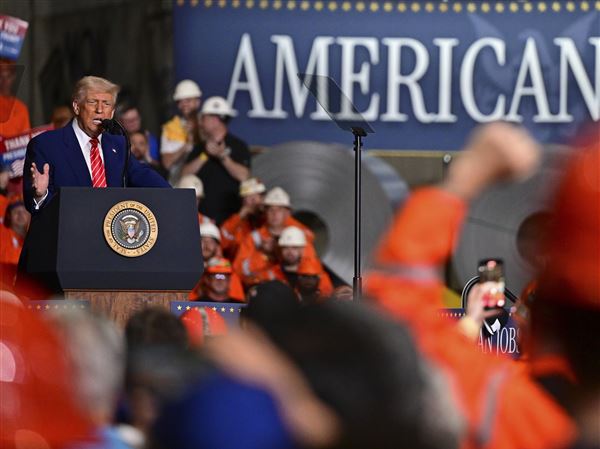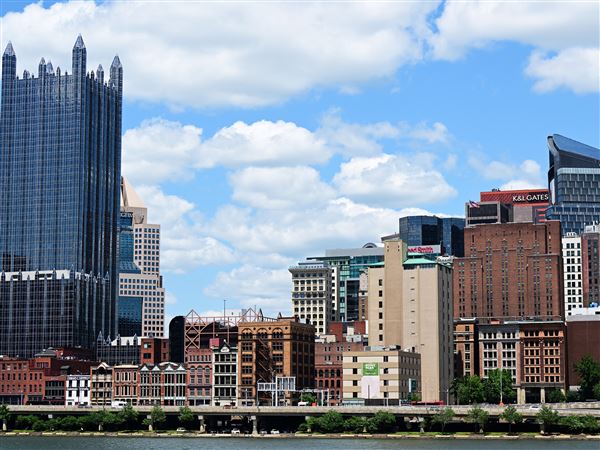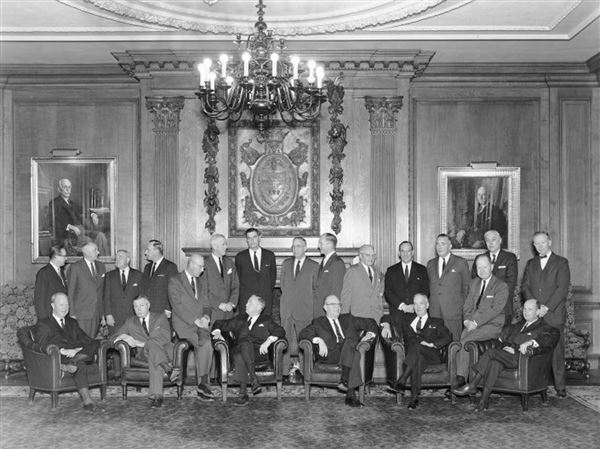ONCE again, the global auto industry is discovering that America is still the best place in the world to make money selling cars.
After dropping precipitously just three years ago, the United States market is growing fast and furiously, up 14 percent this year and headed above 14 million in annual sales for the first time since 2007.
It has been a sudden, stunning turnaround, particularly when compared with the deepening gloom in the European market, the volatility in South America and an unexpected slowdown in China.
The economic environment in the United States has hardly been ideal for a comeback in the car market. Unemployment remains stubbornly high. Housing starts are flat. Consumer confidence is shaky at best. Yet people who put off buying a new car during the recession have come back in droves. And after crashing to its lowest sales level in 25 years in 2009, the United States market has regained its status as a safe haven for the world's automakers and their most reliable source of profits.
"The industry was able to heal itself with natural remedies: new products, improved gas mileage, better technology and providing good value to people who need to replace older models," said Jesse Toprak, chief market analyst for the auto research site TrueCar.com.
Meanwhile, the European market has crumbled under a debt crisis and recession that could depress sales for several more years. China's sensational growth rate has tapered off as well, even as manufacturers keep building factories.
The wild fluctuations have forced car companies to react more rapidly by taking advantage of strong demand in some markets while steeling themselves for lengthier recoveries in others.
"As you move from place to place you actually have to change your spots," said Sergio Marchionne, the chief executive of Chrysler and its parent company, the Italian carmaker Fiat. "I mean, it's like you go through reincarnations every time you travel into different jurisdictions."
Mr. Marchionne's challenge is a snapshot of the difficulties facing most global competitors. In the United States, Chrysler has rebounded from bankruptcy and a government bailout to become the hottest American car company, posting double-digit growth with a revamped lineup of passenger cars and S.U.V.'s.
But in Europe, Fiat is struggling to keep its plants running at even half-speed.
All over the Continent, automakers are slowing production to match steadily shrinking demand. Once a pillar of stable, predictable demand, Europe now faces the same overcapacity issues that plagued the American market a few years ago.
Mr. Marchionne has become a lightning rod for criticism in Europe and in Fiat's home market in Italy for advocating a regionwide restructuring to reduce production.
Other automakers have been less vocal, but share his concerns that too many plants are making too many vehicles for too few buyers.
"This is not a cyclical issue, it's a structural one," said Robert Shanks, the chief financial officer of the Ford Motor Company, which expects to lose more than $1 billion in Europe this year.
The crisis in Europe underscores how even the most mature automotive markets can lose their equilibrium when larger economic forces depress demand. Riding out the downturn is not an option, not when inventories and losses are piling up month after month.
"If I told you that the set of tasks we are facing are easy, I'd be lying," Mr. Marchionne said. "They require every ounce of skill that you have."
The American market, however, looked just as dismal three years ago. For too long automakers kept overproducing, then greasing the market with cheap loans and big discounts to move unsold inventories. Consumers waited for the next sales promotion, confident that carmakers would undercut one another on price to generate demand.
Like the European car companies, Detroit's three automakers were locked into union contracts that made closing factories and cutting jobs difficult and expensive. Buying out workers cost billions of dollars and cut into capital budgets needed to make better, more competitive cars.
The reckoning came when fuel prices shot up in the spring of 2008 and the market for large trucks and S.U.V.'s collapsed overnight. Then the economy turned sour, credit dried up and auto sales plunged. General Motors and Chrysler needed a government bailout to survive, while Ford squeaked through only because it had been prescient enough in 2006 to mortgage its assets and borrow $23 billion.
Yet the crisis was exactly what the American industry needed to reform and set the stage for its remarkable recovery.
Bankruptcy forced G.M. to drastically scale back production and eliminate entire divisions like Pontiac and Saturn. Under Mr. Marchionne, Chrysler pulled back on sales incentives and allowed its market share to bottom out. Even Ford, the healthiest of the three, streamlined its product lineup and poured resources into models that could be sold throughout the world.
By getting smaller and more focused, the Detroit companies were poised to benefit when consumer demand picked up. And instead of buyers being lured into showrooms by sales promotions, they returned to the market more to replace older models.
The average age of vehicles on the road had ballooned to 11 years, and many of those older models had woeful fuel economy. The aging of the nation's fleet turned out to be the best stimulus the industry could ask for. And when consumers began shopping, they found the products offered by Detroit and its competitors to be more fuel-efficient than ever and laden with new technology and safety features.
"The key was that the industry could now sell new cars without resorting to huge incentives that destroyed profits," said Mr. Toprak, the analyst. "Then they could spend more on improving their products."
Now the three Detroit companies are creating jobs rather than cutting them and adding shifts at plants rather than shutting them down. It's not just the domestic automakers capitalizing, either. The German automaker Volkswagen, for example, is already expanding its new plant in Tennessee to meet the growing demand. And Japanese automakers are trying to shift as much production as possible to North America to take advantage of the revitalized market.
Predictions that the United States auto market had lost its vitality seem hollow now. Sales are on track for a third consecutive year of double-digit percentage growth. By next year, analysts expect industry sales to top 15 million vehicles.
The resurgence offers lessons for other markets, especially Europe. The crisis in the American industry was a shock to the system, forcing management and labor alike to confront the problem of spiraling costs and overproduction.
"We need to address our issues in Europe the same way we did in the U.S.," said Stephen J. Girsky, G.M.'s vice chairman and interim head of its troubled Opel division in Europe. "We cannot be satisfied to keep losing money."
European sales have fallen 7 percent so far this year, and some countries like Italy are doing even worse. Yet it's rare that even a single factory closes on the Continent, because of the opposition of unions as well as governments. Calls for restructuring are met with protests, even as plants operate far below capacity and dealerships are clogged with a backlog of inventory.
"Europe is in a lot of ways almost like a hopeless romantic," Mr. Marchionne said. "I mean it's sitting over there wishing that things were different than they are."
The resistance to painful restructuring is reminiscent of how the United Automobile Workers union fought cutbacks by the Detroit companies for years. Contracts and past promises were considered sacrosanct -- even the much-criticized "jobs bank" in which idled employees were paid not to work.
But the financial crisis changed all that. The corporations and their work forces were forced to make hard choices to regain their competitiveness, including the introduction of a two-tier wage system in unionized plants.
It appears to be only a matter of time before the European industry confronts the same tough issues and sharply reduces the cost of producing cars. And the slowdown in sales now will have a benefit down the road, when consumers need to replace outdated clunkers with new products.
The situation in China also recalls a simpler era in the American industry. In the boom decades of the 1950s and '60s, carmakers indiscriminately built new factories to keep up with rising demand. As the country grew wealthier, the odds were that consumers would continue to splurge on new, fancier cars.
But even the fastest-growing economies have to catch their breath, and China is proving no exception. Overproduction there will eventually force automakers to offer discounts, which in turn will reduce the amount they spend on new models. No market, not even China, can avoid the pitfalls of overexpansion, Mr. Marchionne said.
"Whenever you go through excesses, the steady hand says that you need to retrench," he said. "If you believe in the bubble, you're going to end up with a lot of soap on your face when it bursts."
It took a hard fall for the American industry to learn that lesson. In the absence of its tremendous cash squeeze in late 2008, G.M. might have continued muddling along, losing money while producing far more vehicles than it could sell. It took billions in losses before Ford was willing to part with unprofitable brands like Jaguar. And Chrysler might never have broadened its truck-heavy lineup to include smaller, more fuel-efficient cars if its very existence were not threatened.
The newfound discipline by the American companies is producing better cars for consumers, which is crucial to maintaining a steady, sustainable level of demand. No longer does Detroit rely on cut-rate leases to entice buyers into its latest models. Now shoppers are more willing to choose their next car based on its features and performance instead of discounted prices or monthly payments.
The broader solution to a healthy global industry is spreading the costs of developing a new car by starting with vehicle platforms that can yield several models.
Companies like Toyota, Nissan and Volkswagen produce an average of eight models off a single platform, according to Barclays Capital. G.M., by comparison, gets fewer than three models off a typical platform.
The best carmakers can take the basic platforms and generate different cars for different regions, and tailor their production plans depending on sales. Factories can be more nimble, substituting a hot-selling model for one that is lagging in another market.
Economies of scale and so-called global platforms have long been the goal of many automakers, but few have achieved them. Some companies have failed by refusing to homogenize platforms for fear of diluting their brands. The merger of Daimler and Chrysler fell apart partly because of a reluctance to share platforms between Daimler's Mercedes-Benz luxury cars and Chrysler's mass-market models.
Mr. Marchionne has a unique vantage point on that challenge. He has so far successfully used Fiat-based technology and platforms to improve Chrysler's product lineup. And he readily acknowledges that the turmoil and trouble Chrysler went through prepared the foundation for its marriage to Fiat.
The American auto industry, he said, is better off for having gone though the wringer of bankruptcies, bailouts and horrible sales.
"Surviving these events makes you into a different person because you end up realizing you got really close to losing it all," he said. "You end up appreciating every damn thing that happens to you because you know deep down it could have been otherwise."
The troubles in Europe should be a constant reminder of what the American industry went through just a few short years ago. "And if we don't manage it properly," Mr. Marchionne said, "it could happen again."
First Published: October 12, 2012, 10:00 p.m.















